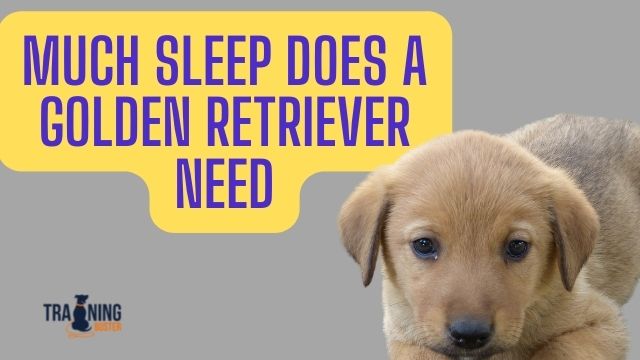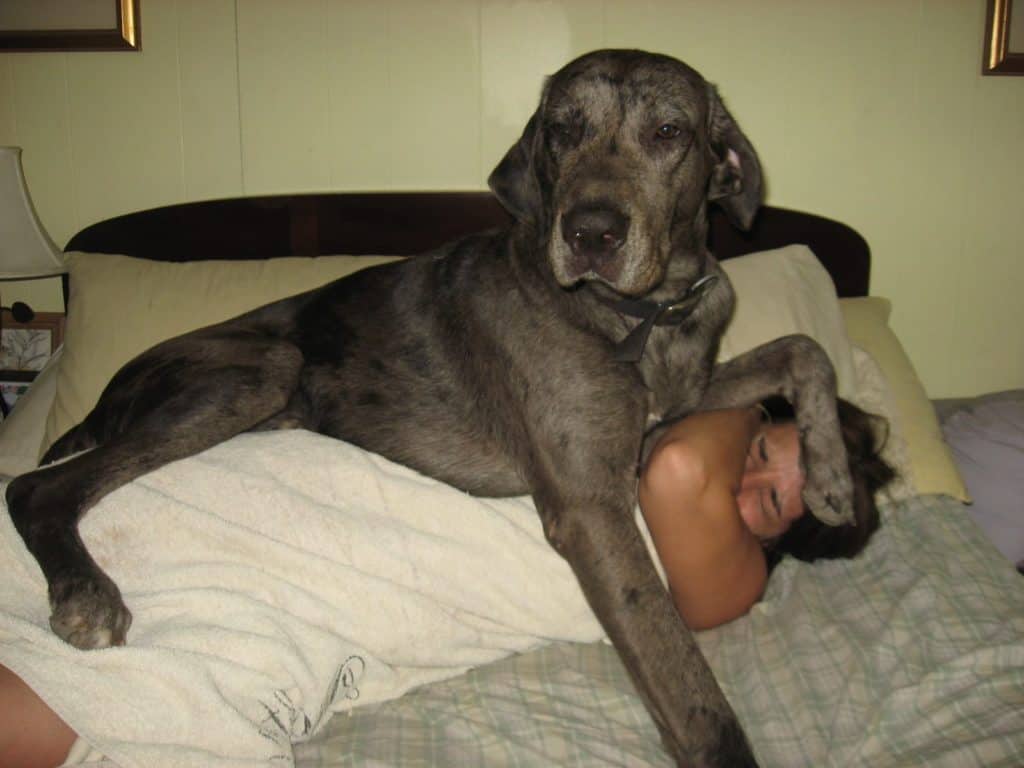
A pug will need a nose operation when their nostrils are too narrow and there soft palate is too long and thick.
Pugs are lovely. They are cute, adorable, friendly and fun. They make a great family pet and have a beautiful little personality. Good reputable pug breeders love their dogs and want only the best for them.
But there’s a problem with pugs, one that needs to be addressed widely: Pugs cannot breathe normally! The reason for this is that the anatomy of their skull is such that their upper airways are ‘squashed’ into too-small space.
The skull of the Collie is a good example of what normal and healthy is – a nice long muzzle allowing the dog’s airways to form correctly and therefore to be able to breathe properly, i.e. get air into and out of its lungs with ease.
Compare this to the Pug and French bulldog: you’ll see that their muzzles are practically gone. (The technical term for the short-muzzled/flat-faced breeds is ‘brachycephalic’.)
The result is that all the soft tissue structures that are meant to be in the muzzle are compressed into too small space and squashed to a point of blocking the air coming in.
Their nostrils are too narrow; their soft palate is too long and thick; the little bones in what there is of their muzzle are too large for the space that’s there; their windpipe is narrowed.
Often times their tongue is too big as well. Because of this these lovely little dogs just cannot get enough air into their lungs without having to make extra efforts to pull this air through narrowed, partially obstructed and convoluted airways. It’s like breathing through straws.
The technical term for this condition is Brachycephalic Obstructive Airway Syndrome (BOAS).
What is the way out to fix a pug’s nose?
Enlarging the nasal openings is a surgical procedure used to correct stenotic nares in brachycephalic dog breeds.
A stenotic nare is a form of brachycephalic syndrome, an upper airway obstruction disorder seen in breeds like the Boston terrier, pug or bulldog. Stenotic nares result from a malformation of the alar folds that form the nostrils.
The external nares are made up of three cartilages: the accessory cartilage, the ventral parietal cartilage, and the dorsal parietal cartilage.
The alar folds are the fleshy, lateral borders of the nostrils that collapse inward upon respiration. In the case of stenotic nares, the alar folds collapse farther than needed, resulting in complete temporary closure of the nostril.
The surgical procedure required to correct stenotic nares is performed by a veterinarian or veterinary otorhinolaryngology specialist, focusing on the removal of the excess tissue wedge from the alar fold.
Enlarging nasal openings in dogs is a highly effective surgical procedure used as a multi-pronged treated to alleviate brachycephalic airway syndrome.
The procedure itself is relatively simple to perform, requiring very little anesthesia with minimal complications.
The majority of patients show improvements immediately following surgery. Dogs that have undergone a stenotic nares correction surgery will be released from the hospital on the day of the surgery.
Some canines appear drowsy and inactive, whereas other dogs return to normal behavior.
In either case, the dog must be confined and restricted to physical activity to prevent the sutures from coming loose.
An Elizabethan collar may be sent home with the dog to prevent manipulation of the incision site. Pain medications, paired with a broad-spectrum antibiotic will be administered as directed by the veterinarian.
Enlarging surgery prevention for your dog
Stenotic nares and brachycephalic syndrome are congenital issues related to the facial structure of brachycephalic dogs. Thus, there is little that can be done to prevent the conditions or the need for corrective surgery.
Your vet may have recommendations for easing your dog’s breathing prior to surgery, such as minimizing exposure to hot and humid weather, maintaining a healthy weight, and using a harness, rather than a collar, for attaching a lead.
What are the Estimated costs of nose surgery?
The cost of an enlarging nasal opening surgery in dogs will run between $200 and $1,000.
The price of your dog’s correctional procedure depends on the severity of the malformation and the procedure used. Some veterinarians will use a laser instead of a scalpel blade, which will raise the price tag. Find out if your pet insurance covers it.
Exercising for pugs
Pugs need around half an hour of exercise per day, but never in hot weather as they don’t tolerate heat well and they can suffer from breathing difficulties due to their flat face. I have written an article called 10 Ways to Exercise Your Dog at Home take a look.
Common health problems with pugs
Some of the characteristics and associated health problems you’ll want to know more about in relation to Pugs include:
Brachycephalic obstructive airway syndrome.
(BOAS) – occurs when the nostrils of a dog are narrowed (stenotic nares) and the soft palate is elongated. These cause breathing problems and symptoms such as exercise intolerance, increased noise when breathing, and difficulty breathing.
Pugs are prone to this and it is often the cause of their characteristic snoring or wheezing.
There are both surgical and medical managements available and you should speak to your vet if you think your Pug is showing any symptoms of BOAS and having any difficulty breathing.
Joint disorders
Such as elbow dysplasia and hip dysplasia – occur when joints don’t develop correctly and cause degenerative joint disease. Bone and joint problems can be managed but there are schemes to screen your dog and see how likely it is that they will suffer from these joint problems.
Eyelid problems
Such as entropion and ectropion – occur in Pugs due to excessive skin over the face and eyes.
This skin causes the eyelids to droop either downwards, or in towards the eye, where the skin rubs and irritates the eye, causing problems.
Pugs can have a prominent eye position
Larger eyeballs and sometimes their eyelids don’t close properly when they blink.
This makes them more prone to eye infections and corneal ulcers. If you’re worried your Pug is having eye problems, you should speak to your vet straight away.
Skin infections
Pugs have lots of extra skin, especially over their faces, which folds over and when bacteria build up in the folds it causes skin fold pyoderma.
Patella luxation.
Where the patella or ‘knee cap’ moves abnormally causing lameness. This can generally be corrected surgically.
Tail problems.
The bones in the tail of a Pug can form incorrectly and the tail can become inverted or ‘corkscrew.’ This can cause problems with the nerves around the area and need surgical correction.
More commonly the large skin fold around the tail can become infected, called skin fold pyoderma.
Atopy
Hypersensitivity to certain allergens, causing itching and skin trauma.
Tracheal collapse.
A condition where the tracheal rings collapse, obstructing the airway and making breathing difficult.
Epilepsy.
A condition resulting in recurrent fits.
Legg-Perthes disease (Legg-Calvé-Perthes).
Blood supply to the femoral head is depleted, causing the destruction of the femoral head.
Hypothyroidism.
A condition in which there’s a decrease in thyroid hormone production.
Distichiasis.
A condition in which small eyelashes grow on the inner surface or the very edge of the eye, which can then rub on the surface of the eye, causing irritation.
Dry eye.
Keratoconjunctivitis sicca (KCS) occurs when one or both eyes don’t produce a normal amount, or type, of tears. This leads to the eye becoming very dry, which in turn can cause infections and ulcers.
Pugs have quite large shoulders relative to their smaller hindquarters and pelvic bones. This can mean they have problems giving birth naturally and Pugs often need to have a cesarean section to be able to give birth.
Intervertebral disc disease.
An abnormality of the discs provide cushioning between the vertebrae (backbones).
My Favourite dog products I use
Related questions
Why do pugs have such severe breathing problems?
Pugs are a severely brachycephalic (flat-faced) breed. Pugs are very likely to suffer from serious health and welfare issues due to their physical conformation, including severe breathing difficulties, eye problems, and skin problems.
Pugs are a member of the ‘Toy’ breed group
Toy breeds are small companion dogs, commonly referred to as ‘lap dogs’. Most toy breeds love attention and can be very friendly and affectionate. They don’t require a large amount of exercise.
Pugs are very amiable, playful, confident dogs. They do have a tendency to be stubborn, so training can be a bit more of a challenge. Pugs integrate well with families and gets on well with young and old people. They need grooming once a week but will need daily cleaning of their facial wrinkles.
My pet pug makes heavy breathing noises when she sleeps. Is this a problem?
Dogs with short faces and small nostrils are prone to respiratory problems later on in their lives. Chronic pressure on the tissues of the nasal passages can create breathing problems, when they are young, and when they age.
Having her nostrils surgically enlarged is a relatively simple procedure, and is somewhat commonly done, often at the time of her spay.
It would be a good idea to discuss this with your veterinarian at her next appointment, to get their opinion on the procedure for her.
Get a copy of our top selling new book on Amazon, Dog Training for Beginners. Get it on Paperback or Kindle here.



